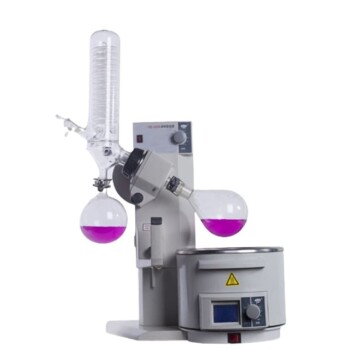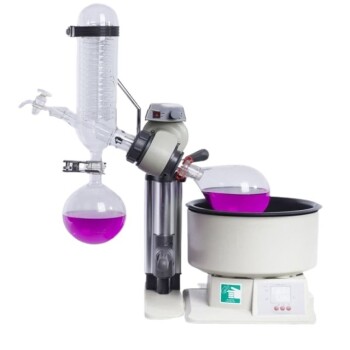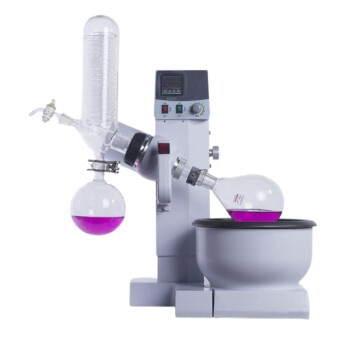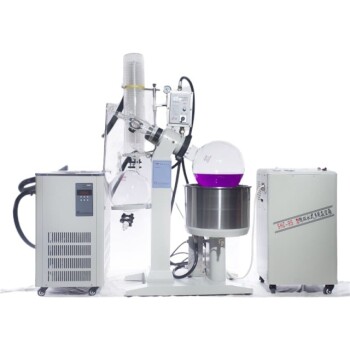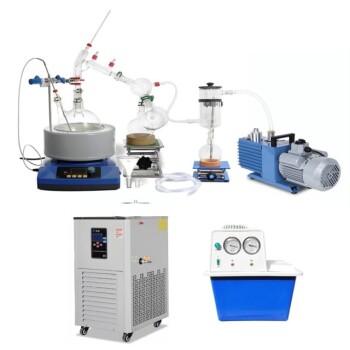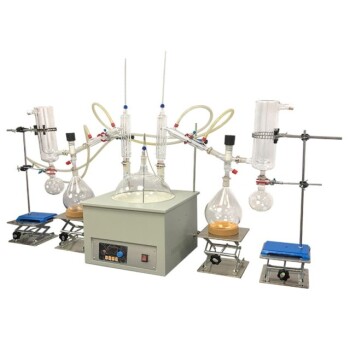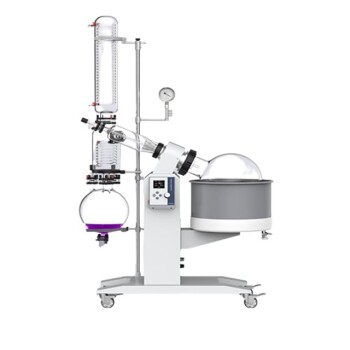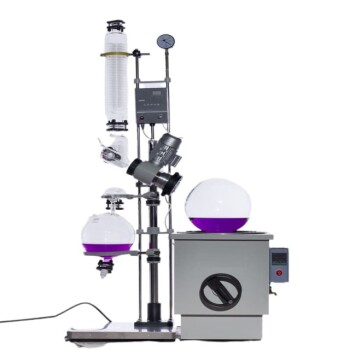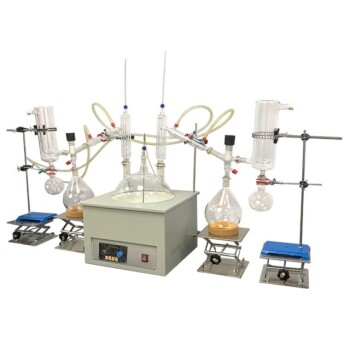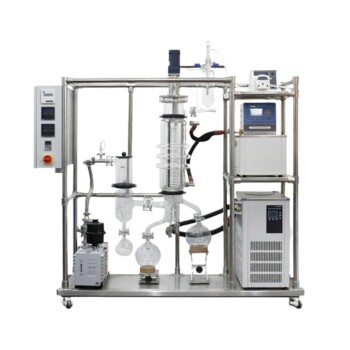A rotary evaporator, or rotovap, is indeed a form of distillation, but it differs significantly from traditional distillation methods. While both processes involve the separation of components based on their boiling points, a rotovap uses a vacuum to lower the boiling point of the solvent, allowing for gentler and more precise separation. This method is particularly useful for heat-sensitive compounds, as it minimizes the risk of thermal degradation. The rotovap's design, which includes a rotating flask and a heated water bath, enhances the evaporation process by increasing the surface area and ensuring even heating. Unlike traditional distillation, which often focuses on concentrating alcohol and removing contaminants, the rotovap is used to isolate and preserve delicate compounds, making it a valuable tool in both chemistry labs and molecular gastronomy.
Key Points Explained:

-
Definition and Purpose of a Rotovap:
- A rotary evaporator, or rotovap, is a device used to gently and efficiently remove solvents from samples through evaporation.
- It is commonly employed in chemistry labs to isolate desired compounds, remove solvents from solutions, and create distillates and extracts in molecular cooking.
-
Comparison to Traditional Distillation:
- Temperature Control: Traditional distillation often involves higher temperatures, which can alter or degrade heat-sensitive compounds. In contrast, a rotovap uses a vacuum to lower the boiling point of the solvent, allowing for separation at much lower temperatures.
- Precision: The rotovap offers more precise control over the evaporation process, making it suitable for delicate compounds that require gentle handling.
- End Product: In traditional distillation, the distillate (condensed vapor) is typically retained, whereas in rotary evaporation, the residue (concentrated compound) is retained after the solvent is removed.
-
Mechanism of a Rotovap:
- Vacuum Application: The rotovap lowers the pressure in the system, which significantly reduces the boiling point of the solvent. This allows for evaporation at room temperature or slightly above, minimizing the risk of thermal degradation.
- Rotating Flask: The rotating flask increases the surface area of the sample, promoting even heating and faster evaporation.
- Condensation: The evaporated solvent travels to a condenser, where it is cooled and collected in a receiving flask, leaving behind the concentrated compound in the original flask.
-
Advantages of Using a Rotovap:
- Gentle Separation: The low-temperature operation preserves the integrity of heat-sensitive compounds, making it ideal for applications in food chemistry, pharmaceuticals, and molecular gastronomy.
- Efficiency: The increased surface area from the rotating flask and the use of a vacuum pump make the process faster and more efficient than traditional distillation.
- Oxidation Prevention: The controlled environment minimizes exposure to oxygen, reducing the risk of oxidation and preserving the original essence of the compounds.
-
Applications of a Rotovap:
- Chemical Laboratories: Used to remove solvents from chemical mixtures, isolate specific compounds, and concentrate solutions.
- Molecular Gastronomy: Employed to create distillates and extracts that retain the original flavors and aromas of food compounds.
- Pharmaceuticals: Utilized in the purification and concentration of active pharmaceutical ingredients (APIs) without compromising their stability.
-
Conclusion:
- While a rotovap operates on the same fundamental principles as traditional distillation, its ability to work at lower temperatures and with greater precision makes it a specialized tool for specific applications. It is particularly valuable in scenarios where the preservation of delicate compounds is paramount, such as in the isolation of flavors, fragrances, and pharmaceuticals. Thus, the rotovap can be considered a form of distillation, but one that is optimized for gentleness and precision.
Summary Table:
| Aspect | Rotary Evaporator | Traditional Distillation |
|---|---|---|
| Temperature Control | Uses a vacuum to lower boiling points, enabling low-temperature evaporation. | Typically operates at higher temperatures, risking thermal degradation of compounds. |
| Precision | Offers precise control, ideal for delicate compounds. | Less precise, often used for simpler separation tasks like alcohol concentration. |
| End Product | Retains the concentrated compound after solvent removal. | Retains the distillate (condensed vapor). |
| Applications | Ideal for heat-sensitive compounds in labs, molecular gastronomy, and pharmaceuticals. | Commonly used for alcohol concentration and contaminant removal. |
| Efficiency | Faster and more efficient due to increased surface area and vacuum use. | Slower and less efficient for delicate compounds. |
Ready to enhance your lab's capabilities with a rotary evaporator? Contact us today to learn more!
